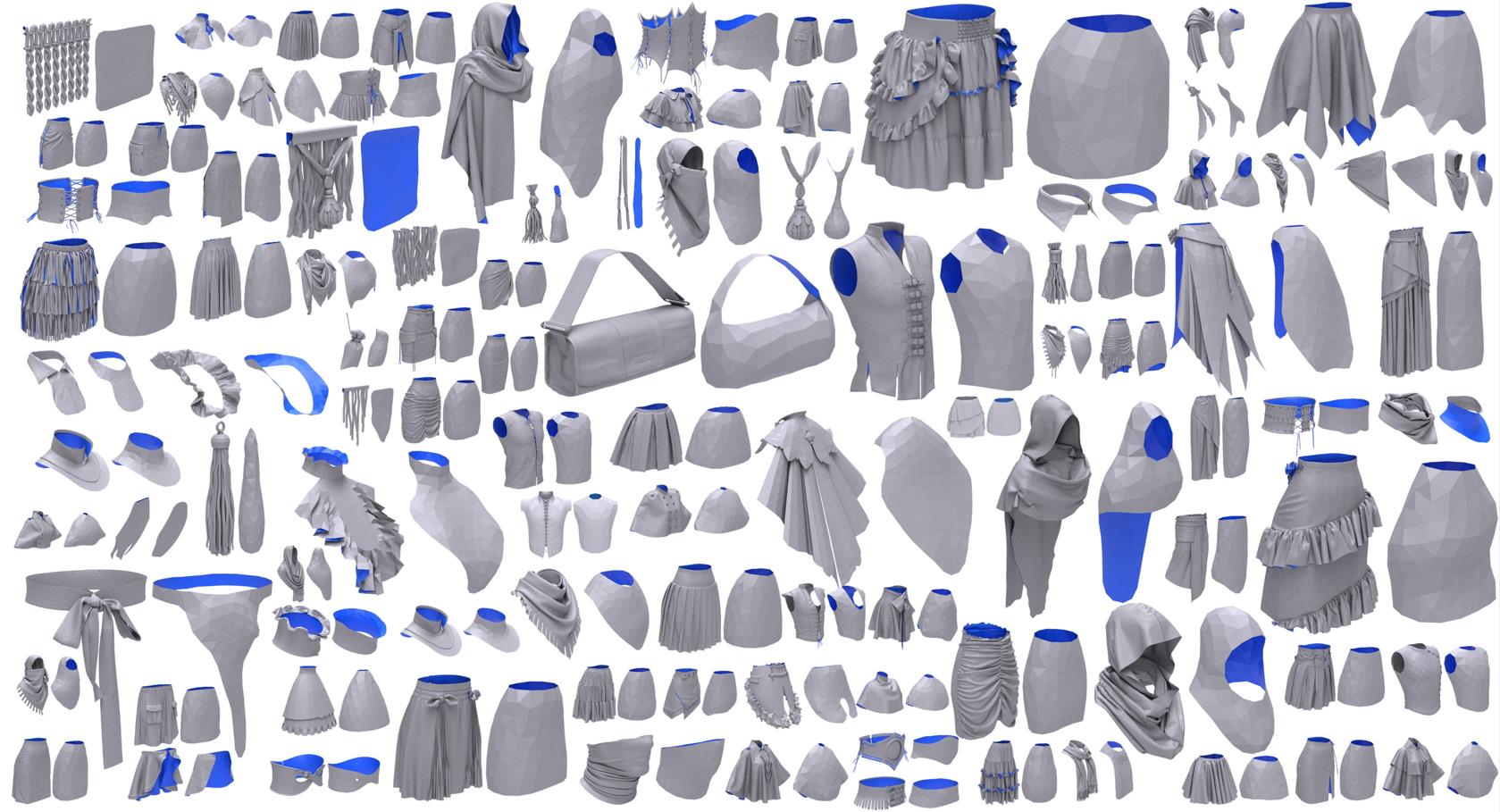ACM Transactions on Graphics (Proceedings of SIGGRAPH 2024)
Proxy Asset Generation for Cloth Simulation in Games
Zhongtian Zheng,
Tongtong Wang,
Qijia Feng,
Zherong Pan,
Xifeng Gao,
Kui Wu

Given the input visual mesh M^0_visual for the skirt, containing complex geometry and multiple layers, we propose a pipeline to automatically create a single-layer low-poly mesh M^0_proxy with an extremely small number of vertices (128 vertices in this case). Additionally, we optimize the skinning weights by differential skinning with several well-designed loss functions, so we get plausible skinned visual mesh, M^*_visual, driven by the simulated proxy mesh, M^*_proxy, at frame 5, 35, and 65 of a dancing motion sequence. Please see the supplemental video for the full animation
Abstract
Simulating high-resolution cloth poses computational challenges in real-time applications. In the gaming industry, the proxy mesh technique offers an alternative, simulating a simplified low-resolution cloth geometry, proxy mesh. This proxy mesh's dynamics drive the detailed high-resolution geometry, visual mesh, through Linear Blended Skinning (LBS). However, generating a suitable proxy mesh with appropriate skinning weights from a given visual mesh is non-trivial, often requiring skilled artists several days for fine-tuning. This paper presents an automatic pipeline to convert an ill-conditioned high-resolution visual mesh into a single-layer low-poly proxy mesh. Given that the input visual mesh may not be simulation-ready, our approach then simulates the proxy mesh based on specific use scenarios and optimizes the skinning weights, relying on differential skinning with several well-designed loss functions to ensure the skinned visual mesh appears plausible in the final simulation. We have tested our method on various challenging cloth models, demonstrating its robustness and effectiveness.
Paper [Preprint]
Video
Results

A collection of 100 distinct clothing items from games and the low-poly proxy mesh generated by our method.